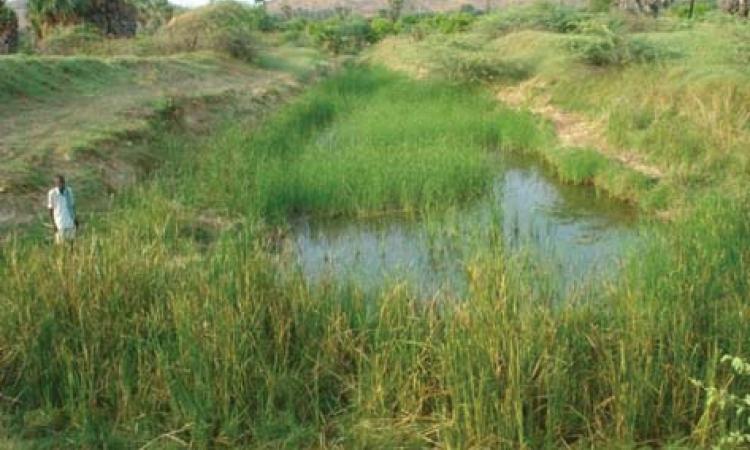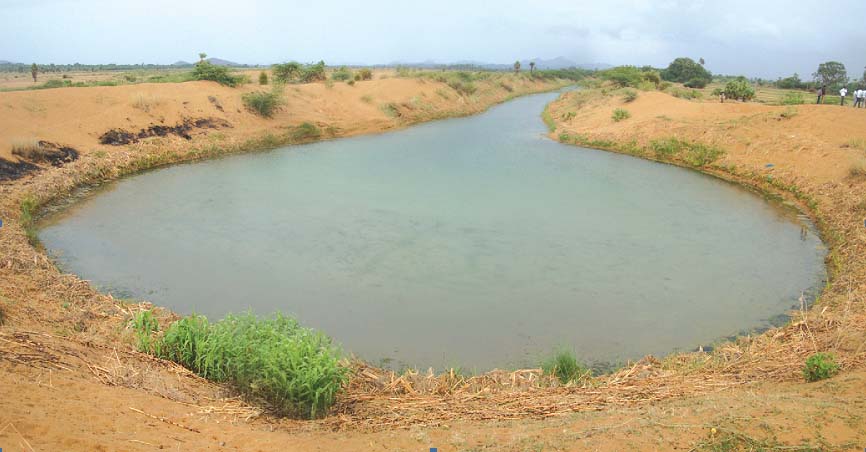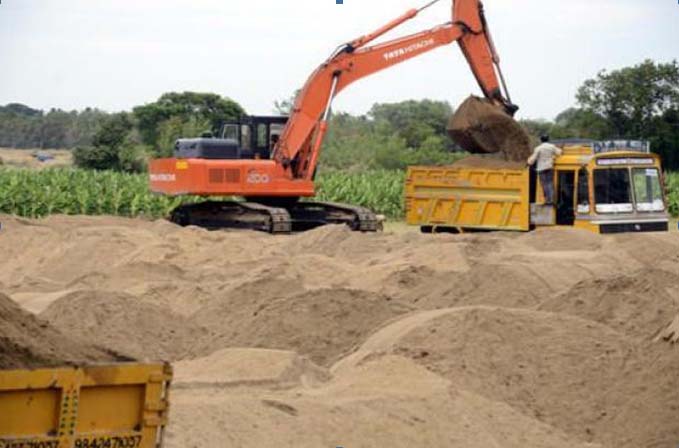
The construction industry went through a boom in the 1990s due to more people demanding and affording houses. This put a lot of pressure on the Pennar area in Andhra Pradesh. Sandmining, which is the process of taking sand, became rampant at that time. This caused changes in the river’s ability to carry water, blocked the water flow, impaired the drainage and almost destroyed the entire river system.

Each gonchi system irrigates about 200-300 acres of paddy (rice). A small number of such systems are used even today along the Pennar river and Thadakaleru, a natural stream in this area. Farmers made large pits (locally called talipiri) at the start of these water channels on stream/ river beds. Water, which oozed out from this was diverted to the gonchi system by natural gravity flow.
Each gonchi has a corresponding gonchi committee consisting of all the farmers who use it. Together, they are responsible for its maintenance, which includes removing the silt that accumulates. Usually done before the monsoons, this responsibility is shared voluntarily by the farmers. They also ensure that the water from the gonchi is distributed proportional to the land hold ing of each farmer. These committees are now faced with the problem of sandmining, which is affecting the gonchi systems due to less inflow of water.
Problems of excessive sand-mining
Sandmining is causing a drop is the sand levels on the river bank, which results in a drop in the groundwater levels as well. This is because the sand holds water in its pores, so lesser sand means lesser water retained and a resulting water crisis. It also results in the river bed drying up because of a higher exposure to the sun. The progressive depletion of sand in the river leads to sinking water tables and many wells going dry. This is even affecting farmers’ livelihoods as sand miners ‘encroach’ onto their agricultural lands.

A report in The Hindu suggests that these were exposed during an inspection of a few villages along the course of river Penna in Peddavaduguru and Singanamala mandals in the district by the Joint Collector in 2008. The Collector directed the Joint Collector to inspect the area as farmers of several villages along the course of the river in the two mandals also represented the issue during the grievances day and explained about the adverse impact of sand mining on them. (2)

Protests have also been staged by political parties outside the Rural Development Officer’s office several times. While the agitation by villagers and local politicians was by and large peaceful, the state government tried to intimidate the villagers by registering cases for destroying public property and rioting. Since then, sporadic protests have been bursting out in the open on a regular basis.
Proposed solutions to the sand-mining problem
There is a need to do a scientific study to assess the impact of sand mining on the river. The river bank should be clearly defined. There needs to be a freeze on sand and gravel mining in the Pennar river for the next five years in the stretches where the gonchis have been revived. The Public Works Department and the police should monitor the river and see that there is no illegal mining and transport of sand. They should act promptly upon any complaint made in this regard; the directions of this Court should be adhered to implicitly.
Another option is to consider an alternative to river sand. Crusher sand, which is sand derived out of crushing rock is being put forward as a potential substitute. It is a granular sandy material found in areas which have an abundant supply of hard rock.
Both agriculture and construction - are important. With the right combination of the suggested measures, we wouldn't have to choose between them.
Endnotes and references
(1) Is Illegal sand mining a by-product of industry demand? Infrawindow Research Bureau, Apr. 13, 2012.
(2) http://www.hindu.com/2008/06/13/stories/2008061359250800.htm